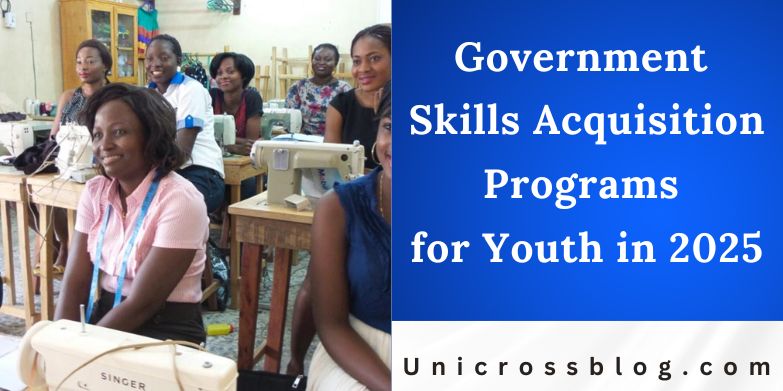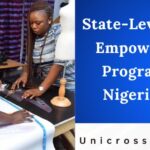In 2025, the world faces rapid changes driven by technology, climate challenges, and economic shifts. Governments worldwide recognize that empowering youth with practical skills is essential for building resilient economies and inclusive societies. With youth making up a significant portion of the global population, particularly in regions like India where the median age is 28, skill acquisition programs are more critical than ever. These initiatives bridge the gap between education and employment, equipping young people aged 15 to 30 with vocational training, digital literacy, and soft skills to thrive in high-demand sectors such as technology, green energy, and manufacturing.
Government-led programs in 2025 emphasize accessibility, focusing on at-risk youth, women, and rural communities. They combine classroom learning, apprenticeships, and on-the-job experience to foster employability and entrepreneurship. For instance, funding for these efforts has surged, with investments like India’s Rs. 8,800 crore allocation for the Skill India Programme through 2026. Globally, these programs aim to create millions of jobs, reduce unemployment rates among youth, and support sustainable development goals.
By 2025, projections from reports like the World Economic Forum’s Future of Jobs indicate that 97 million new roles will emerge, demanding agile, skilled workers. This article explores key government skills acquisition programs for youth in 2025, highlighting their structures, benefits, and impact.

Key Government Skills Acquisition Programs for Youth in 2025
1. United States: YouthBuild and Workforce Pathways for Youth
In the United States, the Department of Labor continues to champion programs that target at-risk youth, providing a blend of education and hands-on training. YouthBuild, active since 1993 and expanded in 2025, serves individuals aged 16 to 24, focusing on low-income and disadvantaged groups. Participants earn a high school diploma or GED while gaining occupational skills in construction and related fields. The program includes leadership development and community service, leading to industry-recognized credentials. In 2025, over 38,000 youth benefited, with evaluations showing higher formal employment rates and reduced teenage pregnancy among graduates, especially women.
Complementing this is the Workforce Pathways for Youth (WPY) initiative, which expands job training in out-of-school settings nationwide. It partners community organizations with local workforce boards to offer soft skills development, career exploration, summer jobs, and apprenticeships. Funding prioritizes high-growth industries like technology and healthcare. A notable 2025 addition is the integration of AI literacy, encouraged through Workforce Innovation and Opportunity Act (WIOA) grants. States can use set-asides for AI-focused youth programs, aiming to prepare 7.5 million workers by 2030. Apprenticeships, such as those in Colorado’s CareerWise program, pair high school students with companies for three-year paid experiences in business and tech pathways.
State-level efforts amplify federal support. Minnesota’s Youth Skills Training (YST) Program awarded $1.5 million in grants to 17 partnerships in June 2025, funding paid work experiences for students aged 16 and older in high-demand occupations. Grants cover recruitment, training, transportation, and certifications, with applications opening again in winter 2025.
2. Canada: Youth Employment and Skills Strategy (YESS)
Canada’s YESS, delivered through 16 interconnected programs, targets youth aged 15 to 30, including those facing barriers like Indigenous communities. In 2025, the strategy emphasizes work experience, training, and wraparound supports to transition participants into diverse sectors. The Skills Link component, under the First Nations and Inuit Youth Employment Strategy, provides up to $30,000 per internship via the Digital Skills for Youth Program (DS4Y). This subsidizes wages and training for post-secondary graduates in digital and soft skills, with a focus on SMEs and non-profits.
YESS promotes collaborations between employers, educators, and service providers. In 2025, call for proposals closed, but ongoing funding supports tailored services like mentoring and job placement. The program’s flexible approach has helped thousands overcome employment barriers, aligning with national goals for an inclusive labor market.
3. European Union: Union of Skills and European Skills Agenda
The European Commission’s Union of Skills strategy, proposed in March 2025, addresses labor shortages by building human capital across the EU. It pilots basic skills support for underachieving youth in reading, math, science, digital, and citizenship areas, aiming for every young person to master these by compulsory schooling’s end. The strategy sets 2025 targets, including increasing ICT PhD enrollment to 5% with at least one-third female participation. It features a Skills Portability Initiative for cross-EU recruitment and a Choose Europe action to attract global talent via Marie Skłodowska-Curie Actions.
Building on the 2020 European Skills Agenda, which runs to 2025, the focus is massive investment in upskilling amid digital and green transitions. Erasmus+ remains a cornerstone, funding youth exchanges, volunteering, and traineeships to boost employability and intercultural skills. In 2025, the program supported millions in studying or working abroad. The European Solidarity Corps engages young people in community projects, while the Digital Education Action Plan integrates AI and digital tools into learning. National implementations, like the UK’s £187 million TechFirst program launched in June 2025, bring AI training to classrooms, partnering with tech giants like Google and Microsoft to skill 7.5 million by 2030.
4. India: Skill India Mission and Pradhan Mantri Kaushal Vikas Yojana (PMKVY)
India’s Skill India Mission, restructured for 2022-2026 with Rs. 8,800 crore, targets 40 crore youth by 2025, emphasizing demand-driven training. PMKVY 3.0, the flagship, trained 7.36 lakh candidates in 2022, with ongoing short-term courses in sectors like retail and aviation. It covers full training costs, including certifications, and integrates Recognition of Prior Learning for informal skills. In 2025, Skill Hubs enrolled 2.28 lakh students across schools and ITIs.
The National Apprenticeship Promotion Scheme reimburses 25% of stipends (up to Rs. 1,500 monthly) to MSMEs, supporting 47 lakh youth over three years via direct benefit transfers. Jan Shikshan Sansthan (JSS) delivers low-cost, doorstep training to rural women and disadvantaged groups aged 15-45, linking to initiatives like PM JANMAN for tribal areas. The IndiaSkills Competition 2025, organized by the Ministry of Skill Development and Entrepreneurship, identifies talent for global events like WorldSkills, aligning standards with industry needs.
State programs, such as Odisha’s Youth Skills Training under Skill Odisha, provide industry-led vocational qualifications up to Certificate III level, focusing on justice-involved youth.
5. Other Global Initiatives
In Nigeria, the Niger Delta Development Commission (NDDC) Skill Acquisition Program offers subsidized training in makeup, web design, and baking for Niger Delta youth, requiring local identification for eligibility. Pakistan’s Digital Youth Hub promotes tech skills, while the World Bank’s Skills for Youth Employment (S4YE) network supports projects in 69 countries, including Liberia’s Youth Opportunities Project for income-generating training.
Impact and Benefits
These programs yield measurable outcomes: increased confidence (70% of UK participants), higher incomes, and formal job placements. They reduce barriers for marginalized groups, with female enrollment rising from 5% to 32% in some cases. Economically, they address skills gaps, projecting Rs. 50,000 crore growth in India’s sector by 2025. Challenges like governance and financing persist, but innovations in digital tracking and industry partnerships enhance efficiency.
READ ALSO: Top Youth Empowerment Programs Transforming Lives in 2025
FAQs
Who is eligible for most youth skills programs in 2025?
Typically, individuals aged 15-30, including at-risk, low-income, or unemployed youth. Specific criteria vary, such as Indigenous status in Canada or residency in India’s Niger Delta for NDDC.
Are these programs free?
Many cover training and certification costs, like PMKVY in India or DS4Y subsidies in Canada. Some, like Minnesota’s YST, offer paid internships, but stipends depend on the program.
How do apprenticeships work under these initiatives?
They combine on-the-job training with classroom learning, often paid. In the US, programs like CareerWise last three years; in India, NAPS reimburses employers to host apprentices.
Do programs focus on emerging skills like AI and green jobs?
Yes, 2025 priorities include AI literacy via US WIOA grants and EU’s green transition VET, preparing youth for 97 million new roles.







